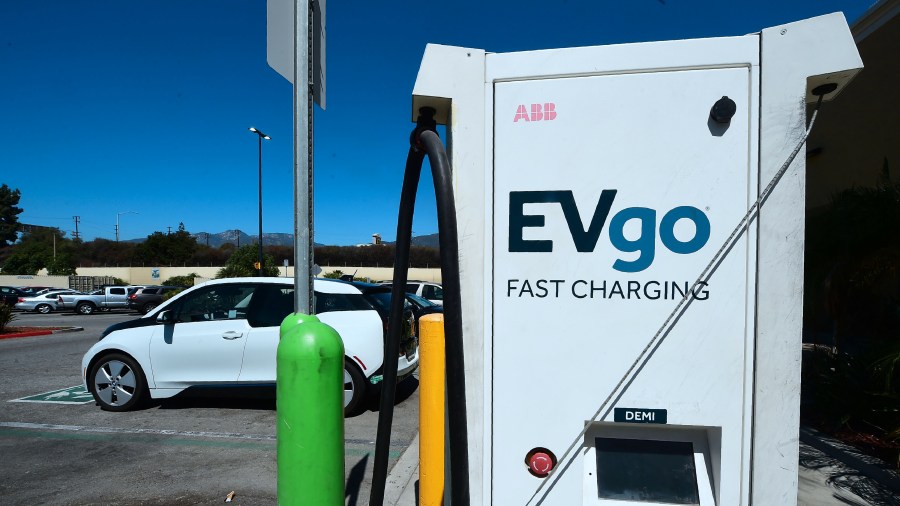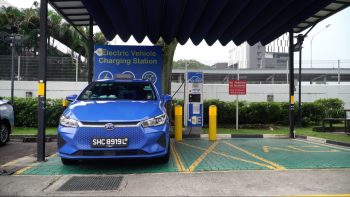When it comes to electric car charging, it’s all about location, location, location

Yesterday, we talked about how the growing market for electric vehicles is affecting the supply chain for batteries. Today, how about where to charge all those batteries?
I have an electric car, and a lot more people will by 2025. Global sales will triple by 2025, according to estimates by IHS Markit. But it’s not just about the number of cars, it’s also about the number of chargers. Let me tell you, it can be a little tricky to keep it powered up all the time.
Jessika Trancik, a professor at MIT who recently co-wrote an article on charger placement for Nature Energy, says in order for the EV market to grow, we’re going to need more chargers in the right places. The top priority, she says, should be finding more options to charge at home. The following is an edited transcript of our conversation.
Jessika Trancik: And by [more options to charge at home] I don’t mean only for people that have off-street parking. But it’s home charging for when people are at home, whether you’re living in an apartment building or you’re living in an urban area where maybe you park on the street, as well as people living in rural areas. Because, basically, what it means is that on more than 95% of days, you’re not even thinking about refilling your car like you do today. You’re just charging your car and it’s ready and charged and ready to go when you want to leave home. So, I think we’ll get there.
Meghan McCarty Carino: Who is going to be responsible for doing this? Is it city governments? Is it apartment landlords? Who really needs to be pushed?

Trancik: We really need to incentivize the private sector. Ideally, this rollout of charging stations will happen in a process where there’s a lot of competition, there’s different firms competing for market share. There’s a critical role for government policy to stimulate innovation and market growth in areas that wouldn’t grow on their own. So, these can be underserved areas, that’s really critical to enable a more equitable rollout of charging infrastructure and support EV adoption for people that want to adopt EVs and are living in many different types of situations.
McCarty Carino: For businesses where people might spend an hour or two, or business districts where people might spend a few hours, is there an economic benefit to installing chargers there, or to locating your business near chargers?
Trancik: I do think there’s an opportunity to think about. OK, maybe I’m an owner of a small village store in a rural area. If I install a charger there, maybe that will attract some business. What I should say is that what we really wanted to find in that study was places where you could put chargers where people wouldn’t incur delays, so there wouldn’t be a delay to regular activities. So if you focus on those, then charging can fit into the way people are already behaving and how they’re moving around in their vehicles, and how long they’re stopping at different locations.
McCarty Carino: People ask me about how big of a pain it is to think about charging, because it is a different sort of frame of mind around how you use your vehicle. But we are very used to, say, charging our phones on a regular basis, you know? That’s something that we use every day that we always want to have charged up. And yes, longer battery life definitely helps with that, the way that range helps. But we still have to find times to charge our phones and we find the right times to do it.
Trancik: Yeah, that’s right. And I think there can be a barrier to making the decision to go for this and it’s kind of a step into the unknown. So I think that’s where it’s really important to think about and provide the information to people of what this would look like. Where would I need to charge? What’s that experience going to be like? And I think, like you said, it can be super convenient. It can be really pretty easy and I think it’s only going to get easier as charging stations expand and as people just learn like, OK, how do I need to adapt my behavior just a little bit, to be able to reliably charge my vehicle?
Related Links: More insight from Meghan McCarty Carino
There are currently about 100,000 public charger outlets in the U.S., according to reporting from The Verge. President Biden has proposed adding half a million stations as part of his infrastructure bill.
One thing that could instantly open up new capacity would be making existing chargers work for every kind of electric car, which they don’t currently. There are a few different plug types used by various automakers, but Tesla CEO Elon Musk said the company is planning to open up its network of thousands of Tesla Superchargers to other EVs some time later this year. Musk said on an earnings call this week it would just take some kind of adapter and download of the Tesla app, though he said Tesla is currently pumping out cars faster than new chargers are coming online.
And a piece in The Wall Street Journal this week points out the kind of chicken-and-egg problem with the business of building these charger networks in the absence of government support. Companies aren’t sure they’ll make any money by installing new chargers, because there aren’t a lot of electric vehicles in many areas, but consumers won’t want to buy them, because there’s not enough charging infrastructure.
The future of this podcast starts with you.
Every day, the “Marketplace Tech” team demystifies the digital economy with stories that explore more than just Big Tech. We’re committed to covering topics that matter to you and the world around us, diving deep into how technology intersects with climate change, inequity, and disinformation.
As part of a nonprofit newsroom, we’re counting on listeners like you to keep this public service paywall-free and available to all.
Support “Marketplace Tech” in any amount today and become a partner in our mission.


















